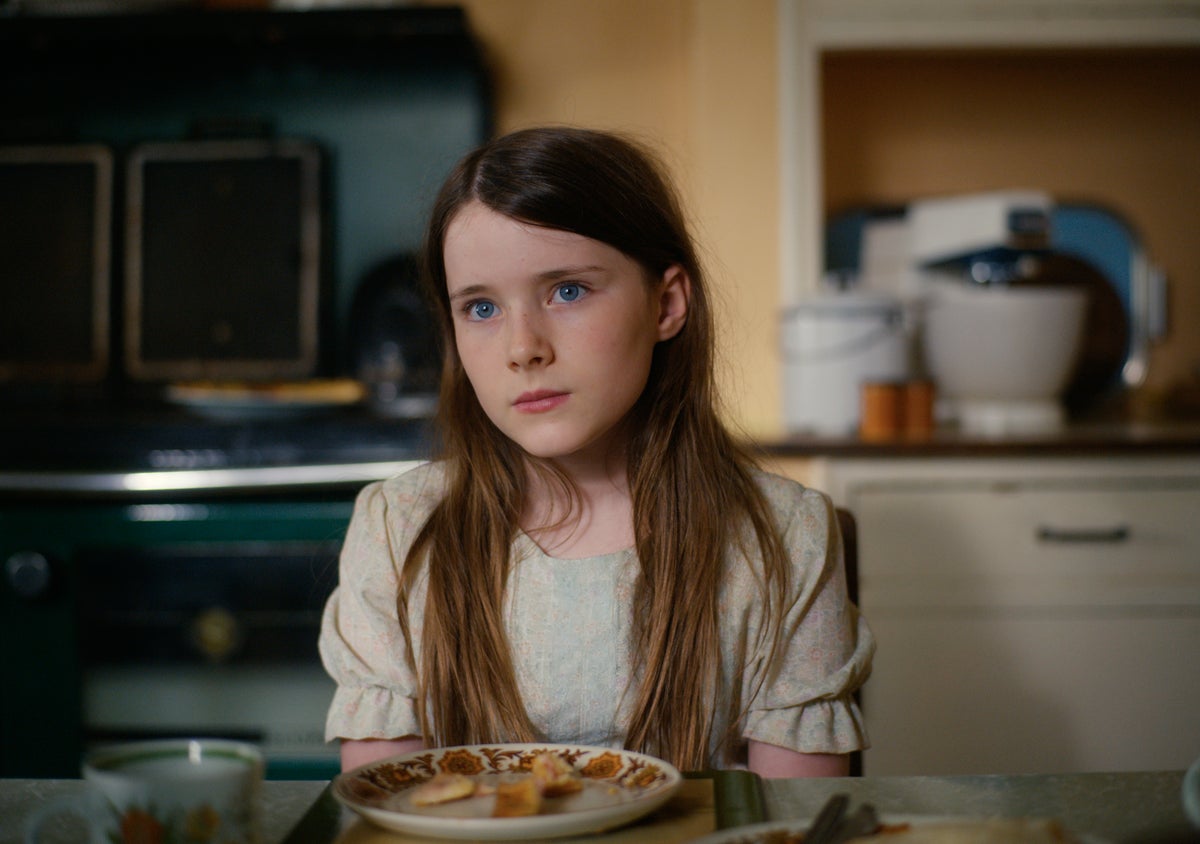
Irish filmmaker Colm Bairéad discovered Claire Keegan’s novella “Foster” a little later than most.
The “long short story,” as Keegan likes to call it, is told through the eyes of a 9-year-old girl in rural Ireland who leaves her overcrowded, neglectful family in the summer of 1981 to live with distant relatives— an older, childless couple. There, she experiences love and care for perhaps the first time in her life.
Published in The New Yorker in 2010, it won several awards and garnered comparisons to Seamus Heaney’s poetry and William Trevor’s stories.
Bairéad’s adaptation, “ The Quiet Girl,” (now playing in North America) has become no less significant and is proving to be a watershed moment for Irish cinema. Not only has it broken box office records in Ireland and the U.K., but it’s also the first Irish language film to compete for an Oscar.
And it might not have been possible had Bairéad encountered the story any earlier. It was in 2018 when he spotted it on a best of list of works by Irish women. He went out that day, bought it and read it. By the end, he was in tears and dreaming of a way to turn it into a film... in Irish.
“I felt like it was something I had to pursue with great conviction,” he said in a recent interview. “It just really affected me. I fell in love with every aspect from its emotional potency to its formal qualities. And it just felt so compassionate a piece of work. I felt a strong desire almost to shelter this young fictional child at the center of it kind of suffering in silence.”
Bairéad had been making short films in the Irish language for some years, having grown up bilingual in Irish and English. But though Irish is the official language of the country and on road signs and drivers’ licenses, English is the working language, he said. Feature films in Irish were practically unheard of. Before 2017, there’d been something like four ever made in the history of cinema.
In the past several years, that number has doubled thanks to the Cine4 initiative, a collaboration between Screen Ireland, the Broadcasting Authority of Ireland and Irish public service broadcaster TG4, to fund and promote films made in Irish. Now, Irish language films are being made annually. But the global profile of and acclaim for “The Quiet Girl” (or “An Cailín Ciúin") has been a game-changer.
“There was a big question mark over whether there was appetite for Irish language cinema and how would it be received,” he said. “Thankfully the answer to that has been a resounding yes.”
A large part of its success is its young star Catherine Clinch, who before “The Quiet Girl” had never acted on camera. Casting had stretched on for around seven months in the search for the right Cáit, who among other things needed to speak Irish.
One day, she and her classmates at her Irish language primary school received a sheet with information about auditions. Clinch went home and filmed a tape with her mother.
“I almost felt like we could have cast her from that,” Bairéad said. “She was really clever as well, because she filmed scenes in the appropriate rooms in her house. I remember being impressed by that.”
A chemistry test with Carrie Crowley and Andrew Bennett, who would be playing her surrogate family, Eibhlín and Seán Kinsella, sealed it for everyone.
“They were sort of like a holy trinity,” he said. “We just knew this was our Cáit.”
Clinch, who is as soft spoken as her character, didn’t have techniques or tricks to embody the observant, internal Cáit as she navigates her new surroundings and bonds with the Kinsellas.
“I did try, even if she wasn’t saying anything, to imagine what she’d be thinking in that moment,” Clinch said.
“A natural,” Bairéad added.
When she got the part, her friends lovingly teased that “Catherine’s going to the Oscars.”
“But I definitely never thought that it was actually going to happen,” Clinch said.
The success of “The Quiet Girl” and other Irish projects like “The Banshees of Inisherin” are part of what some are calling a “ green wave ” in Hollywood. At this year’s Oscars, 14 nominees are Irish, including many of the cast and crew from “The Banshees of Inisherin,” like writer-director Martin McDonagh, actors Colin Farrell, Brendan Gleeson, Kerry Condon and Barry Keoghan, actor Paul Mescal (“Aftersun”), editor Jonathan Redmond (“Elvis”) and VFX animator Richard Baneham (“Avatar: The Way of Water”).
“We’ve actually all gotten to know each other during the awards season. It’s been a really lovely experience,” Bairéad said. “It’s not every day that you get to represent your country. This is a very special moment.”
But beyond the significance for Ireland, what has been most striking to Bairéad has been the uniformity of response to “The Quiet Girl" since its prize-winning debut at the Berlin Film Festival this time last year.
“Wherever it plays, whether it’s South Korea or Australia or the U.K., France or Spain, I mean, it’s the same response, the same emotional outpouring that you receive from audiences at the end of the film,” he said. “I think it’s a testament to Claire Keegan’s original source material, which itself has been translated into many languages. I think that the basic elements are really universal to the point that you could probably tell this story anywhere.”







